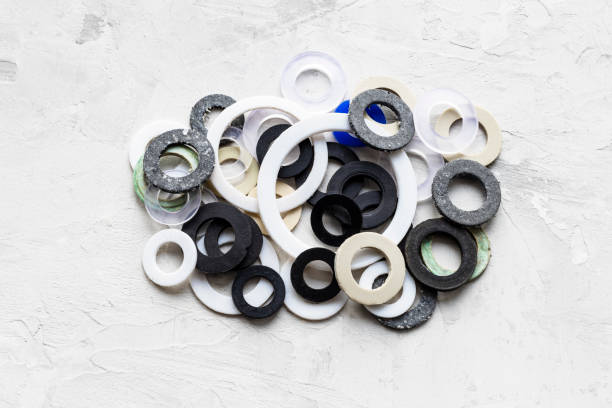Custom gaskets
Silicone Gasket vs Rubber Gasket: Temperature Range Comparison & Applications
When choosing the right gasket for industrial, automotive, or household applications, understanding material performance under different conditions is essential. Two of the most common gasket materials are silicone and rubber (EPDM, Nitrile, Neoprene, etc.). One of the key differentiators between them is their temperature resistance.
In this article, we’ll compare silicone gaskets vs rubber gaskets, focusing specifically on temperature range, performance, and best-use scenarios.
What Is a Gasket? 
A gasket is a sealing material placed between two surfaces to prevent leaks from or into joined objects under compression. Gaskets are critical in systems exposed to pressure, heat, moisture, or chemicals.
Silicone Gasket: Temperature Range & Features
Silicone is a synthetic elastomer known for its exceptional thermal stability, flexibility, and resistance to weathering.
✅ Temperature Range:
- Typical range: -75°F to 450°F (-59°C to 232°C)
- Specialty grades: Up to 600°F (316°C)
✅ Key Features:
- High resistance to extreme temperatures
- Excellent flexibility and compression set
- UV, ozone, and weather resistant
- FDA-approved grades available for food-grade applications
✅ Best Applications:
- Automotive engine components
- Aerospace and aviation
- Medical devices
- Outdoor electrical enclosures
- High-heat industrial processes
Rubber Gasket (EPDM, Nitrile, Neoprene): Temperature Range & Features
“Rubber” is a broader term encompassing various synthetic elastomers such as EPDM, Neoprene, Nitrile (Buna-N), and Natural Rubber. These materials are used based on their chemical and environmental resistance.
✅ Temperature Range (by type):
- EPDM: -40°F to 250°F (-40°C to 121°C)
- Neoprene: -20°F to 200°F (-29°C to 93°C)
- Nitrile (Buna-N): -40°F to 250°F (-40°C to 121°C)
✅ Key Features:
- Good resistance to water, oil, and mild chemicals
- Cost-effective
- Moderate heat resistance
- Suitable for dynamic applications due to good abrasion resistance
✅ Best Applications:
- Plumbing and HVAC systems
- Sealing automotive fluids (Nitrile)
- Marine and weather-stripping (Neoprene)
- Steam and hot water systems (EPDM)
Silicone vs Rubber Gasket: Temperature Range Comparison
| Feature | Silicone Gasket | Rubber Gasket (General) |
|---|---|---|
| Max Temp | Up to 450°F (232°C) | Up to 250°F (121°C) |
| Min Temp | -75°F (-59°C) | -40°F (-40°C) |
| UV/Ozone Resistance | Excellent | Good to Poor (varies by type) |
| Flexibility at Low Temps | Superior | Moderate |
| Cost | Higher | Lower |
| Oil Resistance | Poor | Good (Nitrile best) |
Which Gasket Is Best for High-Temperature Applications?
If your application involves high temperatures (above 250°F or 121°C), silicone gaskets are the better choice due to their excellent thermal resistance. They maintain flexibility and sealing integrity in both hot and cold conditions, making them ideal for thermal cycling environments.
However, for general-purpose use where temperature exposure is moderate and oil or chemical resistance is needed, rubber gaskets (like Nitrile or Neoprene) may be more cost-effective and suitable.
Conclusion
Choosing between silicone gaskets vs rubber gaskets depends largely on your temperature requirements and application environment. Silicone excels in extreme temperatures, while rubber types like EPDM, Neoprene, and Nitrile offer solid performance in specific conditions at a lower cost.
If you’re designing a system exposed to high heat or freezing temperatures, silicone gaskets are often worth the investment. For less extreme conditions, rubber gaskets provide excellent sealing performance and durability.
Need help selecting the right gasket material for your project? Contact our gasket specialists or request a custom quote today.

